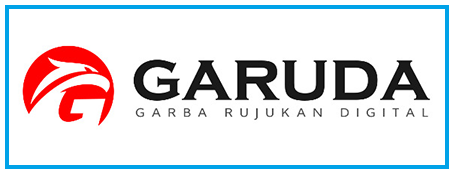PERBANDINGAN TINGKAT ADIKSI GAME ONLINE DENGAN TINGKAT AGRESIVITAS PADA REMAJA SEKOLAH MENENGAH PERTAMA
Keywords:
Aggressive, Addiction, Online Game, Iogaq, BpaqAbstract
Aggressive behavior is an act of non-physical or physical force that intended to cause harm. Aggressive behavior in adolescents is a global public health problem. It includes a range of acts from acts of intimidation, physical fights, even a murder. In Indonesia, there has been an increase in cases of aggressive behavior in teenagers from 321 cases in 2021 to 1451 cases in 2020.Studies have shown multiple factors within a person that may contribute to aggressive behavior, including an addiction to online games. An excessive increase in dopamine due to online game addiction causes a decrease in dopamine D2 receptors (D2DRs) in the prefrontal cortex. This causes dysfunction of the prefrontal cortex which can lead to aggressive behavior The aim of the study was the investigation of the addictive potential of gaming as well as the relationship between online game addiction and aggressive behavior. A cross-sectional study was conducted using Indonesia Online Game Addiction Questionnaire (IOGAQ) and Buss-Perry Agression Questionnaire (BPAQ). The sample consisted of 133 students of SMPN 1 Lubuk Sikaping, using total sampling technique. Data revealed that 58,6% of students fulfilled diagnostic criteria of online game addiction (mild to severe category) and 56,4% of students had moderate levels of aggression. The study concluded that there is a correlation between online game addiction and aggressive behavior (p-value = 0.000).
Downloads
References
Adinoff, B. 2004. “Neurobiologic Processes in Drug Reward and Addiction.” Harv Rev Psychiatry 12, no. 6: 305–20.
American Psychiatric Association. 2013. Diagnostic and Statistical Manual of Mental Disorders, 5th Edition: DSM-5. 5th ed. American Psychiatric Publishing.
Arnold, H, and Buss and Mark Perry. 2017. “Aggression.” Encycl Personal Individ Differ 63, no. 3: 1–3.
Best, M, JM Williams, and EF Coccaro. 2002. “Evidence for a Dysfunctional Prefrontal Circuit in Patients with an Impulsive Aggressive Disorder.” Proc Natl Acad Sci U S A 99, no. 12: 8448–53.
DS, Bickham. 2021. “Current Research and Viewpoints on Internet Addiction in Adolescents.” Curr Pediatr 9, no. 1: 1–10.
Eichenbaum A, Bavelier D, and Green CS. 2014. “Video Games: Play That Can Do Serious Good.” Am J Play 7, no. 1: 50–72.
Heng CJ, and Rabbani M. 2020. . “. The Relationship between Gaming Addiction, Aggressive Behaviour and Narcissistic Personality Traits among University Students in Malaysia.” Indian J Public Heal Res Dev 11, no. 05: 620–24.
James, R, and R Blair. 2013. “The Neurobiology of Aggression.” Neurobiol Ment Illn 165, no. 4: 1103–11.
Khairunnisa. 2020. “Hubungan Kecanduan Game Online Berunsur Kekerasan Dengan Perilaku Agresif Pada Remaja Di Smp Muhammadiyah 5 Kota Padang Tahun 2020.” Padang.
Kim EJ, Namkoong K, Ku T, and Kim SJ. 2008. “The Relationship between Online Game Addiction and Aggression, Self-Control and Narcissistic Personality Traits.” Eur Psychiatry 23, no. 3: 212–18.
King, D, and P Delfabbro. 2019. “Internet Gaming Disorder: Theory, Assessment, Treatment, and Prevention.” Academic Press.
Ko CH, Liu GC, Hsiao S, and et al. 2009. “Brain Activities Associated with Gaming Urge of Online Gaming Addiction.” J Psychiatr Res 43, no. 7: 739–47.
KPAI. 2020. “Update Data Infografis KPAI.” 2020. https://www.kpai.go.id/publikasi/infografis/update-data-infografis-kpai-per-31-08-2020-.
Magdalena, K, U Hasanah, and R Rusilanti. 2016. “Perbandingan Sikap Agresivitas Remaja Pedesaan Dan Perkotaan.” JKKP (Jurnal Kesejaht Kel Dan Pendidikan) 3, no. 1: 44–49.
Stoehr, JD. 2006. “The Neurobiology of Addiction.” Philadelphia: Chelsea House.
Sturmey, P, JJ Allen, and CA Anderson. 2017. “Aggression and Violence: Definitions and Distinctions.” In Wiley Handb Violence Aggress, 1–14.
Suryani, Rima. 2021. “Analisis Program Penanganan Kekerasan Terhadap Anak Di Kabupaten Pasaman Tahun 2020.” Universitas Andalas.
Warits N, Putri M, and Doriza S. 2020. “Dampak Game Online : Studi Fenomena Perilaku Trash-Talk Pada Remaja.” J Psikol Malahayati 2, no. 2: 72–85.
WHO. 2018. “Gaming Disorder.” 2018. https://www.who.int/news-room/q-a-detail/gaming-disorder .
———. 2021. “Youth Violent.” 2021. https://www.who.int/news-room/fact-sheets/detail/youth-violence-.
Willoughby T. 2008. “A Short-Term Longitudinal Study of Internet and Computer Game Use by Adolescent Boys and Girls: Prevalence, Frequency of Use, and Psychosocial Predictors.” Dev Psychol 44, no. 1: 195–204.
Yanuar Fahrizal BYP. 2021. “Intensity Of Violent Behavior In Adolescents Addicted To Violent Online Games In Yogyakarta Indonesia.”
Zaman, E, M Chashmi, and N Hedayati. 2009. “Effect of Addiction to Computer Games on Physical and Mental Health of Female and Male Students of Guidance School in City of Isfahan.” Addict Heal 1, no. 2: 98–104.
Downloads
Published
How to Cite
Issue
Section
License
Copyright (c) 2024 SENTRI: Jurnal Riset Ilmiah

This work is licensed under a Creative Commons Attribution-NonCommercial-ShareAlike 4.0 International License.









